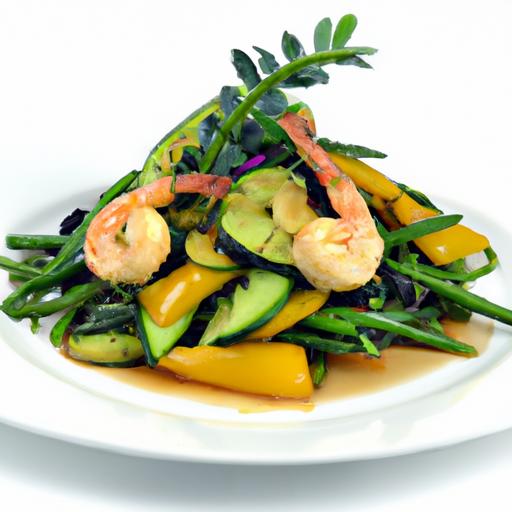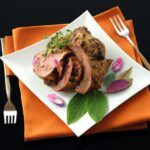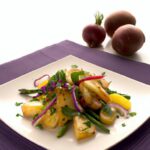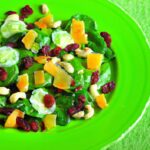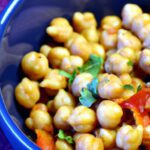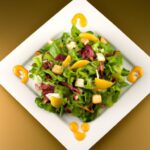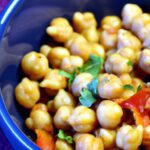In a world brimming with fast food temptations and endless culinary distractions, the true art of eating well can sometimes feel like a lost treasure. Yet, amidst the chaos of modern kitchens, the magic of power-packed plates-meals that are as simple as they are nutrient-rich-awaits discovery. These vibrant, wholesome dishes don’t just fuel the body; they ignite vitality, sharpen the mind, and celebrate the pure joy of nourishment. Join us as we explore how to craft effortless, nutrient-dense meals that transform everyday eating into a vibrant act of self-care and wellness. Welcome to the delicious journey of power-packed plates!
Power-Packed Plates: Crafting Simple, Nutrient-Rich Meals
Power-Packed Plates bring vibrant vitality and wellness to your daily dining with thoughtfully chosen ingredients that fuel both body and mind. Embracing nutrient-dense foods alongside balanced macronutrients encourages sustained energy and sharp focus, making your meals not just delicious-but purposeful. This recipe showcases how to elevate flavor naturally and prepare effortless, wholesome meals that transform your culinary routine.
Prep and Cook Time
Prep: 15 minutes | Cook: 25 minutes | Total: 40 minutes
Yield
Serves 4 nourishing portions
Difficulty Level
Easy – perfect for everyday cooking
Ingredients
- 1 cup quinoa, rinsed and drained
- 2 cups vegetable broth (low sodium)
- 1 medium sweet potato, peeled and diced (about 1 cup)
- 1 cup kale, chopped, tough stems removed
- 1/2 cup cooked chickpeas (canned, rinsed and drained)
- 1/4 cup raw walnuts, toasted and chopped
- 1 small avocado, sliced
- 2 tablespoons extra virgin olive oil
- 1 garlic clove, minced
- 1 teaspoon smoked paprika
- 1/2 teaspoon ground cumin
- Salt and freshly ground black pepper, to taste
- Juice of 1 lemon
- Fresh parsley, finely chopped (for garnish)
Instructions
- Cook the quinoa: In a medium saucepan, combine quinoa and vegetable broth. Bring to a boil, then reduce heat to low, cover, and simmer for 15 minutes until liquid is absorbed and quinoa is fluffy. Remove from heat and let sit covered for 5 minutes. Fluff with a fork.
- Prepare the sweet potato: While quinoa cooks, heat 1 tablespoon olive oil in a skillet over medium heat. Add diced sweet potato and sauté for 8-10 minutes until tender and lightly caramelized, stirring occasionally to prevent sticking.
- Sauté the kale and chickpeas: In the same skillet, add the remaining olive oil and minced garlic. Cook until fragrant, about 30 seconds. Add chopped kale, chickpeas, smoked paprika, and cumin. Sauté until kale is wilted and chickpeas are warmed through, about 5 minutes. Season with salt and pepper.
- Combine and season: Transfer quinoa to a large mixing bowl. Add the sautéed vegetables and toss gently to combine. Drizzle with lemon juice and adjust seasoning as desired.
- Finish and garnish: Divide the mixture evenly onto four plates. Top each with sliced avocado and toasted walnuts. Sprinkle fresh parsley for a burst of color and freshness.
Tips for Success
- For a plant-based protein boost, swap chickpeas for cooked lentils or tofu cubes.
- To save time, roast sweet potatoes in advance or substitute with butternut squash cubes.
- Use kale stems for homemade vegetable stock or add finely chopped for extra texture.
- Toast walnuts in a dry pan until fragrant to intensify flavor-watch carefully to avoid burning.
- Make-ahead: Prepare quinoa and sweet potatoes up to 2 days in advance and assemble fresh.
Serving Suggestions
This vibrant, power-packed plate shines served warm or at room temperature. Complement it with a crisp side salad of cucumber and cherry tomatoes dressed in lemon vinaigrette for added freshness. Garnish thoughtfully with an extra drizzle of olive oil and a sprinkle of crushed red peppers if you prefer a subtle heat boost.

| Nutrient | Per Serving |
|---|---|
| Calories | 420 kcal |
| Protein | 14g |
| Carbohydrates | 52g |
| Fat | 15g |
Explore more healthy high-protein recipes to keep your vitality soaring, and visit The Nutrition Society for evidence-based insights on nutrient-rich meal planning.
Q&A
Q&A: Power-Packed Plates – Crafting Simple, Nutrient-Rich Meals
Q1: What exactly makes a meal “power-packed” and nutrient-rich?
A power-packed meal is a vibrant harmony of flavors and nutrients that doesn’t just fill your stomach-it fuels your body and mind. It’s a balanced plate rich in vitamins, minerals, protein, healthy fats, and fiber, designed to provide sustained energy, support immunity, and keep you feeling vibrant throughout the day.
Q2: Why should we focus on simplicity when crafting nutrient-rich meals?
Simplicity is the secret sauce to consistency. When meals are straightforward and quick, they’re easier to prepare regularly, helping you maintain a healthy diet without stress. Simple doesn’t mean bland; it means thoughtful combinations of whole foods that naturally shine without complicated techniques or hard-to-find ingredients.
Q3: What are some go-to ingredients for creating nutrient-dense plates?
Think colorful veggies (like spinach, bell peppers, and carrots), whole grains (quinoa, brown rice), lean proteins (chicken, beans, tofu), healthy fats (avocado, nuts, olive oil), and superfoods like berries or seeds. These ingredients pack a punch in vitamins, antioxidants, and essential nutrients with minimal prep fuss.
Q4: Can power-packed meals cater to different dietary preferences?
Absolutely! Whether you’re vegan, vegetarian, gluten-free, or omnivorous, crafting nutrient-rich meals is all about mixing and matching foods that fit your lifestyle. Swap animal proteins for legumes and tofu, use gluten-free grains, or get creative with plant-based fats to keep your plate lively and nourishing.
Q5: How can someone new to meal prepping start creating these plates consistently?
Start small and plan ahead. Choose a few staple ingredients and prep them in batches-roasted veggies, cooked grains, and portioned proteins-so meals come together quickly during the week. Experiment with herbs, spices, and dressings to keep flavors exciting without added calories.
Q6: What role do portion sizes play in crafting nutrient-rich meals?
Portion control ensures you get enough nutrients without overeating. Balancing your plate visually-half filled with veggies, one quarter with protein, and one quarter with whole grains or starchy veggies-helps maintain energy and supports digestion, all while keeping meals satisfying.
Q7: How do power-packed meals impact overall well-being?
Beyond just physical health, these meals nurture your brain, boost mood, and enhance stamina. The right nutrients improve cognitive function, reduce inflammation, and regulate blood sugar, making you feel more alert, steady, and ready to conquer the day.
Q8: Any creative tips to keep nutrient-rich meals fun and exciting?
Play with textures, colors, and international flavors! Toss crunchy nuts on soft grain bowls, add a splash of vibrant turmeric dressing, or mix tangy pickled veggies into your meals. The more your plate delights your senses, the more likely you’ll stick to wholesome eating habits joyfully.
Crafting power-packed plates doesn’t have to be complicated. With a sprinkle of creativity and a dash of planning, every meal can become a nourishing celebration of simplicity and vitality. Bon appétit to health!
In Retrospect
As we wrap up our journey through the world of power-packed plates, remember that creating nutrient-rich meals doesn’t have to be complicated or time-consuming. With a little creativity and mindful choices, you can transform everyday ingredients into vibrant, nourishing dishes that fuel both body and mind. Embrace the simplicity of wholesome foods, experiment with colorful combinations, and let your kitchen become a playground of health and flavor. After all, the most powerful meals are those crafted with intention-where nourishment meets enjoyment in every bite. Here’s to eating well, living fully, and savoring the endless possibilities on your plate.